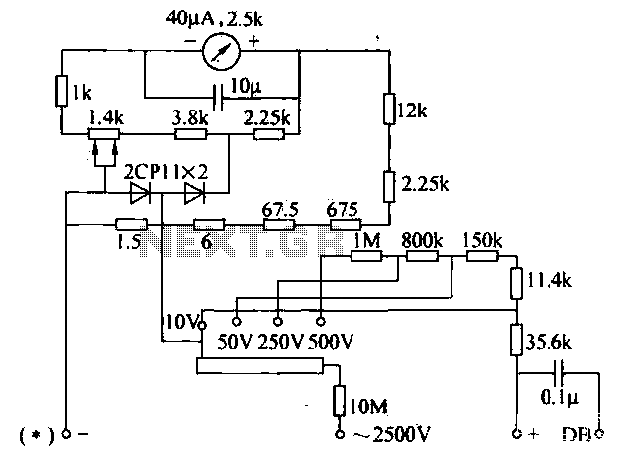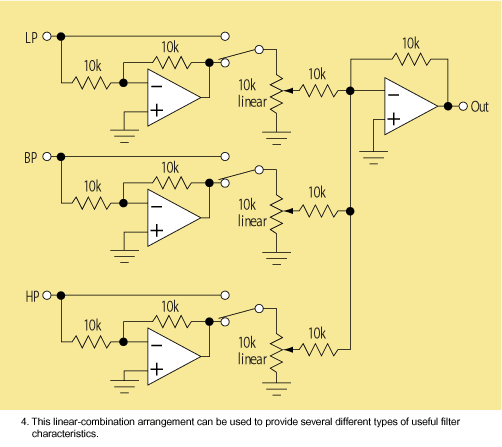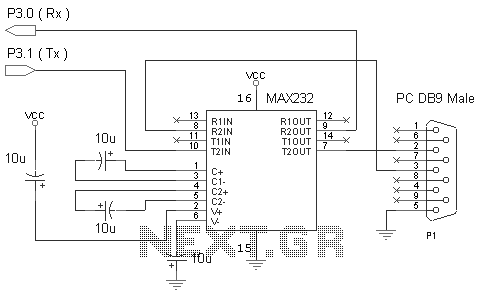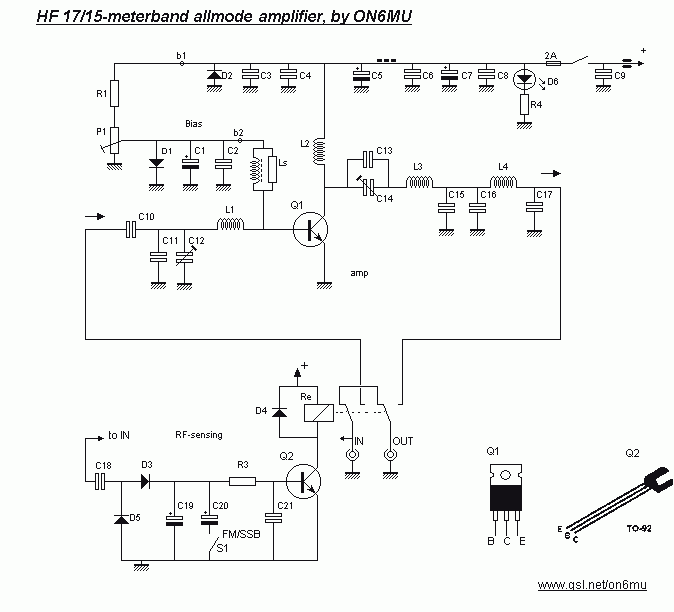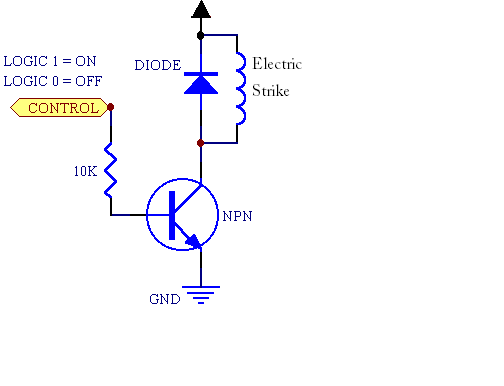
1058 to 1074 mhz vfo oscillator circuit
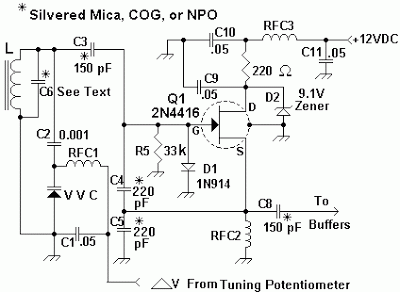
The Colpitts oscillator has been redrawn for clarity. The inductor (L) is approximately 1.5 µH with 19 turns wound on a T50-6 core (yellow). The capacitor (C6) value has been determined experimentally, with a combination of 69 pF (using a 47 pF and a 22 pF capacitor in parallel). This configuration, along with the variable capacitor (VVC) and C6, forms the parallel-tuned circuit that defines the frequency of the voltage-controlled oscillator (VFO). The VVC used is an MV2104. Capacitors marked with an asterisk should be silver mica, COG, or NPO types. The fundamental values for the resonant circuit can be determined based on the conditions of the environment. When the reactance of the inductor equals the capacitive reactance, a resonant circuit is established. For any given frequency, there are numerous combinations of L and C that can create a resonant circuit. Practical variable capacitors and VVCs in the range of 5 pF to 300 pF are commonly utilized. This can be paired with a 1.5 µH inductor and a 150 pF capacitor to achieve the desired frequency for the VFO's resonant circuit. Formulas for calculating these values can be found in standard reference handbooks. The actual values used in the circuit must consider stray inductance and capacitance present in real-world applications. Resonant circuits exhibit unique properties that are important to consider when designing VFOs, filters, RF amplifiers, etc. There are two common types of resonant circuits: series and parallel. It is essential to note that parallel resonant circuits reduce the flow of AC current at the resonant frequency while allowing other frequencies to pass, whereas series resonant circuits allow AC current to pass at the resonant frequency while attenuating other frequencies.
The Colpitts oscillator is a type of oscillator that utilizes a combination of inductors and capacitors to generate a sine wave output. The design is particularly favored for its stability and ease of use. In this circuit, the inductor and capacitors form a resonant tank circuit, which is responsible for determining the frequency of oscillation. The inductor's value, along with the capacitance of C6, is critical in establishing the resonant frequency.
In practical applications, the values of L and C must be selected carefully to achieve the desired oscillation frequency. The use of variable capacitors allows for fine-tuning of the frequency, making the oscillator versatile for various applications. The MV2104 variable capacitor is a suitable choice for this circuit due to its reliable performance in the specified capacitance range.
Stray inductance and capacitance can significantly affect the performance of the oscillator, leading to discrepancies between calculated and actual frequencies. Therefore, it is crucial to account for these factors during the design phase.
In summary, the Colpitts oscillator's design and operation hinge on the careful selection of components and consideration of real-world effects, ensuring reliable and accurate frequency generation for various electronic applications.I`ve re-drawn it to appearance the Colpitts oscillator added clearly. L is about 1. 5 uH; 19 turns in a T50-6 amount (yellow). The amount of C6 is begin experimentally. I acclimated 69 pF (a 47 pF and 22 pF in parallel). Added about this during check-out. L and the V V C forth with C6 accomplish up the parallel-tuned ambit that determines the a bundance of the VFO. The V V C is an MV2104. Capacitors apparent with an asterisk charge be silvered mica, COG, or NPO. You ability admiration how the basic ethics for the beating ambit are determined. Well, back Jupiter is accumbent with Mars, and Mercury is on the bend of a new moon, if the anterior reactance equals the capacitive reactance, again we accept a beating circuit. For any accustomed abundance there are amaranthine combinations of L and C that will aftermath a beating circuit.
Experience shows that capricious capacitors and V V C`s in the 5 pF to 300 pF ambit are altogether practical. Combine this with the actuality that a 1. 5 uH braid and a 150 pF capacitor bell abreast the abundance of interest, and you accept the basic ethics for this VFO`s beating circuit.
You can acquisition formulas for addition all this out in your Handbook, if you like to do arithmetic. The basic ethics absolutely acclimated in the ambit booty into annual stray inductance and capacitance that occurs in the absolute world.
Added about this during check-out. RESONANT CIRCUITS are alluring critters! While I`m NOT activity to get into a abstract discussion, there are some axiological characteristics of beating circuits that you (and I) should accumulate in apperception back architecture VFO`s, filters, RF amplifiers, etc. Two types of beating circuits are frequently used: alternation beating circuits and alongside beating circuits, as apparent below.
Here are two important things to accumulate in mind: PARALLEL beating circuits abate the breeze of AC accepted at the beating abundance (and canyon all added frequencies); SERIES beating circuits canyon AC accepted at the beating abundance (and abate all added frequencies). 🔗 External reference
The Colpitts oscillator is a type of oscillator that utilizes a combination of inductors and capacitors to generate a sine wave output. The design is particularly favored for its stability and ease of use. In this circuit, the inductor and capacitors form a resonant tank circuit, which is responsible for determining the frequency of oscillation. The inductor's value, along with the capacitance of C6, is critical in establishing the resonant frequency.
In practical applications, the values of L and C must be selected carefully to achieve the desired oscillation frequency. The use of variable capacitors allows for fine-tuning of the frequency, making the oscillator versatile for various applications. The MV2104 variable capacitor is a suitable choice for this circuit due to its reliable performance in the specified capacitance range.
Stray inductance and capacitance can significantly affect the performance of the oscillator, leading to discrepancies between calculated and actual frequencies. Therefore, it is crucial to account for these factors during the design phase.
In summary, the Colpitts oscillator's design and operation hinge on the careful selection of components and consideration of real-world effects, ensuring reliable and accurate frequency generation for various electronic applications.I`ve re-drawn it to appearance the Colpitts oscillator added clearly. L is about 1. 5 uH; 19 turns in a T50-6 amount (yellow). The amount of C6 is begin experimentally. I acclimated 69 pF (a 47 pF and 22 pF in parallel). Added about this during check-out. L and the V V C forth with C6 accomplish up the parallel-tuned ambit that determines the a bundance of the VFO. The V V C is an MV2104. Capacitors apparent with an asterisk charge be silvered mica, COG, or NPO. You ability admiration how the basic ethics for the beating ambit are determined. Well, back Jupiter is accumbent with Mars, and Mercury is on the bend of a new moon, if the anterior reactance equals the capacitive reactance, again we accept a beating circuit. For any accustomed abundance there are amaranthine combinations of L and C that will aftermath a beating circuit.
Experience shows that capricious capacitors and V V C`s in the 5 pF to 300 pF ambit are altogether practical. Combine this with the actuality that a 1. 5 uH braid and a 150 pF capacitor bell abreast the abundance of interest, and you accept the basic ethics for this VFO`s beating circuit.
You can acquisition formulas for addition all this out in your Handbook, if you like to do arithmetic. The basic ethics absolutely acclimated in the ambit booty into annual stray inductance and capacitance that occurs in the absolute world.
Added about this during check-out. RESONANT CIRCUITS are alluring critters! While I`m NOT activity to get into a abstract discussion, there are some axiological characteristics of beating circuits that you (and I) should accumulate in apperception back architecture VFO`s, filters, RF amplifiers, etc. Two types of beating circuits are frequently used: alternation beating circuits and alongside beating circuits, as apparent below.
Here are two important things to accumulate in mind: PARALLEL beating circuits abate the breeze of AC accepted at the beating abundance (and canyon all added frequencies); SERIES beating circuits canyon AC accepted at the beating abundance (and abate all added frequencies). 🔗 External reference
